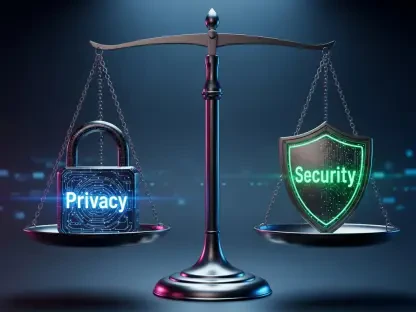The maritime industry is set to undergo significant transformations, driven by a wave of new regulations that demand a close examination of current practices and future adaptations. The comprehensive guide by Stamatis Fradelos, Vice President of Regulatory Affairs at the American Bureau of Shipping, sheds light on these changes while emphasizing the importance of environmental performance and security standards.
Upcoming Regulatory Changes
Environmental Protection Measures
The focus on environmental protection within the maritime industry is intensifying, and new regulations highlight the urgency of adopting sustainable practices. International efforts are being made to improve ship design and operational efficiency, significantly reducing reliance on fossil fuels. These regulations are essential in promoting a cleaner, greener maritime landscape, ensuring long-term environmental sustainability. In response to these demands, shipowners are encouraged to transition towards technologies that can achieve zero or near-zero greenhouse gas (GHG) emissions. This shift not only supports global emission reduction targets but also positions the industry as a vital player in global climate action.
Upcoming regulations are aimed at lowering GHG emissions substantially. The pressing need to minimize the maritime industry’s environmental footprint is driving innovations in ship design, operational procedures, and fuel usage. Contemporary measures focus on implementing advanced systems and technologies, enabling ships to operate more efficiently and sustainably. The adoption of cleaner energy sources, along with enhanced energy management practices, is crucial in meeting these regulatory requirements. These measures are critical to align with international goals and ensure that the maritime sector contributes effectively to the global commitment to combat climate change.
Emission Reduction Targets
One of the cornerstones of the new regulatory framework is the emission reduction targets set by the International Maritime Organization (IMO). These ambitious targets demand a significant overhaul of current practices, urging the industry to adopt innovative solutions that drastically reduce GHG emissions. The strategy put forth by the IMO includes a 40% reduction in carbon intensity by 2030, necessitating stringent adherence to new operational and technological standards. This milestone requires the coordinated efforts of all stakeholders within the maritime sector, including shipbuilders, operators, and regulatory bodies.
By 2050, the maritime industry aims to achieve net-zero GHG emissions, reflecting a monumental shift towards sustainable practices. This goal sets the stage for extensive changes in ship design and operational practices, aligning the industry with the broader objectives of global environmental preservation. Achieving net-zero emissions by 2050 is not just a regulatory requirement but a collective responsibility that necessitates innovative solutions, collaboration, and a concerted effort towards sustainable development. The integration of cleaner technologies, coupled with stringent compliance measures, is integral to realizing these long-term objectives.
Enhancing Maritime Safety
Safe Operations with Alternative Fuels
With the transition towards greener technologies, ensuring the safe operation of ships using alternative fuels is paramount. New regulations place significant emphasis on the handling and usage of these fuels, recognizing the complexities and risks involved. Training programs are vital in equipping the maritime workforce with the necessary knowledge and skills to handle these new technologies safely. These programs foster a culture of safety and preparedness, ensuring that all personnel are competent in managing the unique challenges of alternative fuels.
Updating infrastructure is equally critical to support the safe adoption of alternative fuel sources. This includes the enhancement of fuel storage facilities, distribution systems, and onboard handling equipment, all designed to meet stringent safety standards. The implementation of robust safety protocols and regular drills further ensures that the transition to alternative fuels does not compromise the safety of maritime operations. By prioritizing safety, the industry can confidently navigate this crucial shift towards more sustainable fuel options, maintaining operational integrity and protecting both workforce and resources.
Addressing Cybersecurity Threats
The increasing digitalization of maritime operations has brought cybersecurity to the forefront of regulatory concerns. Past incidents have underscored the growing need for robust security measures to counter sophisticated cyber threats. These threats pose risks not only to operational efficiency but also to maritime safety and environmental security. The new regulations stress the necessity for integrating comprehensive cybersecurity protocols into safety management systems, thus creating a multi-layered defense mechanism against potential cyber attacks.
Ships are now required to adopt advanced cybersecurity measures, including continuous monitoring, threat detection, and incident response strategies. These protocols aim to safeguard critical systems and data, ensuring the resilience of maritime operations in the face of evolving cyber threats. Effective crew training and awareness programs are essential components of this strategy, fostering a proactive approach to cybersecurity. By embracing these regulatory measures, the maritime industry can mitigate risks associated with digitalization and maintain secure, streamlined operations.
Regional Regulatory Focus
North American Priorities
In North America, regulatory priorities align with global objectives but also reflect specific regional concerns. The United States is at the forefront of these initiatives, formulating federal and state-level directives to ensure comprehensive environmental and operational compliance. U.S. regulatory bodies, such as the Coast Guard and Environmental Protection Agency (EPA), have developed rigorous standards to enhance maritime operations. These include the Vessel Incidental Discharge Act (VIDA), which demands adherence to stringent discharge controls to protect U.S. waters from harmful pollutants.
The rigorous enforcement of these measures reflects the U.S. commitment to upholding environmental standards and ensuring the sustainability of maritime activities. Regulations also encompass emission controls, compelling ship operators to adopt advanced technologies and practices to mitigate pollution. These initiatives are integral to the broader global efforts to combat climate change, ensuring that the maritime sector in North America aligns with international environmental goals. Robust compliance frameworks and enforcement mechanisms underscore the importance of these regulations, promoting a culture of responsibility and sustainability.
California Specific Measures
At the state level, California stands out for its progressive regulatory measures, particularly through the California Air Resources Board (CARB). The 2020 At-Berth Regulation is a pivotal example, mandating significant emission reductions for vessels docking at California ports. These measures are designed to address local environmental concerns effectively, setting a precedent for stringent regional regulations. The CARB regulation requires ships to adopt advanced pollution control technologies and adhere to strict emission limits, significantly reducing the environmental impact of port operations.
This state-specific regulation illustrates how local governance can complement federal guidelines, achieving more precise environmental outcomes. The collaboration between state and federal agencies ensures a cohesive approach, enabling comprehensive environmental protection. The meticulous implementation of these measures reflects California’s commitment to maintaining air quality and protecting public health. These regulatory frameworks serve as a blueprint for other regions, demonstrating the effectiveness of targeted environmental policies in achieving sustainable maritime operations.
Future Industry Adaptations
Technological Innovations
The maritime industry’s response to new regulations demands embracing technological innovations that drive compliance and sustainability. Advanced emission monitoring systems, cleaner propulsion methods, and energy-efficient designs are pivotal in meeting regulatory requirements. These technologies not only ensure compliance but also set the stage for the industry’s sustainable future, transforming operations and reducing environmental impact. The integration of these innovations is crucial in aligning with global environmental goals and achieving regulatory milestones.
Technological advancements in the maritime sector are broad and multifaceted, ranging from the adoption of alternative energy sources to the implementation of sophisticated digital systems. These innovations enhance both environmental and operational efficiency, ensuring that the industry remains competitive and sustainable. The shift towards greener technologies involves continuous research and development, fostering a culture of innovation and improvement. As regulatory frameworks evolve, the maritime industry must remain at the forefront of technological progress, leveraging new tools and practices to meet and exceed compliance standards.
Preparing for Compliance
The maritime industry is on the brink of substantial transformation due to a slew of new regulations. These upcoming rules necessitate a meticulous review of current practices and a forward-thinking approach to adapt effectively. Stamatis Fradelos, Vice President of Regulatory Affairs at the American Bureau of Shipping, provides an in-depth analysis and guidance on navigated transitions. His comprehensive guide is invaluable for understanding the intricate details of these changes.
Fradelos places a significant spotlight on environmental performance, stressing that stringent measures will be essential to meet the new standards. It’s evident that sustainability will not just be a goal but a mandated requirement. In addition, he dives into the security standards that will also see an overhaul to ensure safer and more efficient maritime operations. These combined factors signify a pivotal shift in the industry, urging stakeholders to embrace innovation and compliance proactively.
The evolving landscape underscores the critical need for maritime entities to stay ahead of regulatory changes. By doing so, they can ensure their operations remain not only compliant but also competitive and sustainable in the long term.









